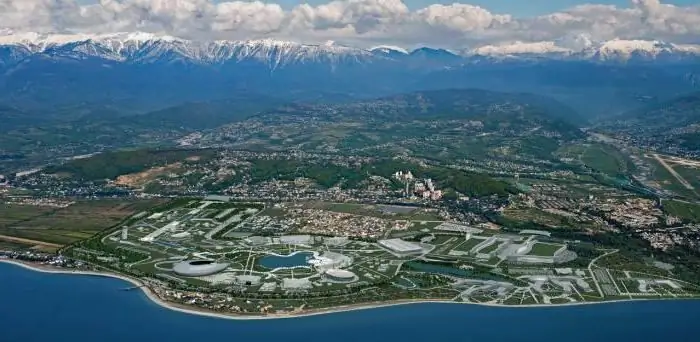- Author Harold Hamphrey [email protected].
- Public 2023-12-17 10:06.
- Last modified 2025-01-24 11:10.
The Republic of Vietnam - and this can be seen on the map of the country - stretches in a narrow strip from north to south. Most tourists come to this fertile region for the sun and swimming in the warm sea, but which region to choose at what time of the year is the key to a good, literally cloudless vacation. The territory of the country is divided into three climatic zones: North, Central and South Vietnam. The climate in each zone may also differ, depending on the elevation of the area above sea level.

North of the country lies in a subtropical monsoon climate. This means that northern winds blow in winter, bringing cold and damp air masses, and in summer, monsoons from the ocean, which set stuffy and rainy weather. From the beginning of January to the end of February, cold rain drizzles, and from July to the end of September it pours like a bucket (80% of the annual rainfall falls in three months). If youIf you don't like cold weather, it's better not to go to North Vietnam in winter. The weather in January on the plains is about 17 ° C, but in the mountains, in the resort of Sapa, the thermometer often drops below 0 ° C and snow falls. Therefore, you should come to Hanoi and its surroundings in the off-season - April-May or October-November. Even better in autumn - you will be pleased with the sea that has not had time to cool down.

South of the ridges and uplands of Truong Son and up to 16°N. extends Central Vietnam. The climate here is tropical. This area is also not suitable for winter recreation: temperatures in January-February do not rise above + 20 °C. The rainy season here lasts from August to January, reaching a peak intensity in October-November. But the coastal plains are drier, it rains mainly in the foothills. The famous Dalat mountain resort is located in this region, located on a mountain plateau at an altitude of 1800 m. The resort was founded by the French, calling this area Vietnamese Switzerland - here, even in summer, the thermometer does not rise above + 25 ° C.
Now it's South Vietnam's turn. It has a subequatorial climate. It is warm all year round, the difference between summer and winter is 3-4 degrees. In the Mekong Delta, for example, at any time of the year, tourists are met by warm weather - 26-28 ° C. In this climatic zone, only two seasons are distinguished: dry and wet. It rains from April to October, but not all the time, but about an hour or two a day. The hot sun instantly dries the moisture. The dry season begins in October, when only 7% of the annual rainfall falls in half a year. An ideal place to relax in winter.

The whole of Vietnam, whose climate is shaped by the monsoons, is often prone to typhoons that hit the coast, causing significant damage, and sometimes even human casu alties. Most often this happens during the "wet" season: in the second half of summer and autumn in Northern and Central Vietnam. The south is less prone to typhoons, although they do happen here.
The island of Phu Quoc is considered the most fertile in terms of receiving tourists. There, the “wet” season generally lasts only a month (October), the rest of the time you will find sunny, calm weather. Vietnam, due to its 2,000-kilometer stretch from north to south, welcomes tourists all year round, but in the south, hotel prices skyrocket during the winter months as the tourist season is at its peak. In the central part of the country, winter is a transitional period between "wet" and "dry" periods. Storms are frequent in this region at this time.






